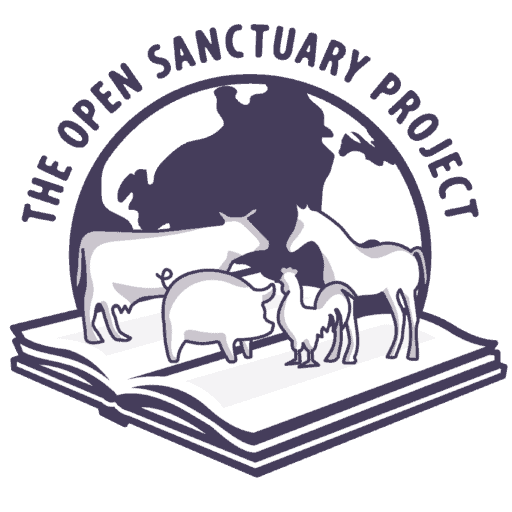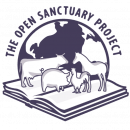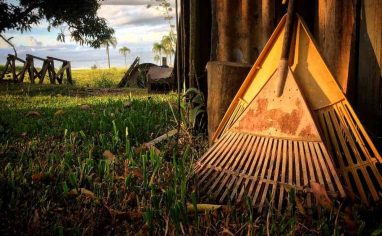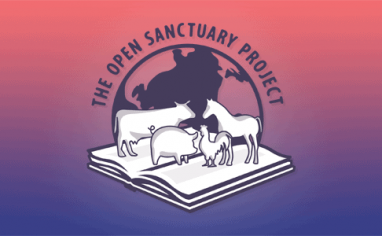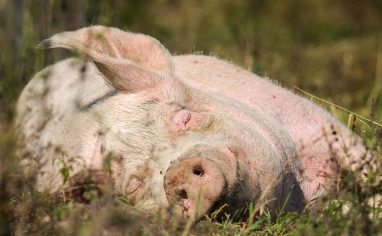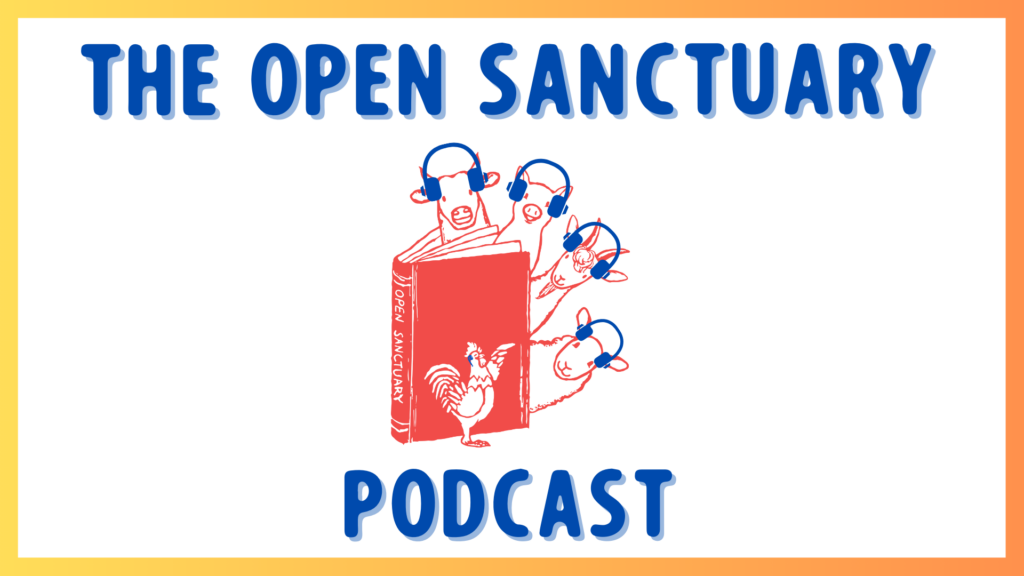
Subscribe To The Open Sanctuary Podcast
If you’d like to get the latest episodes of The Open Sanctuary Podcast, you can subscribe for free on all Podcast platforms, including Apple Podcasts and Spotify!
Episode Notes
In the 50th episode of The Open Sanctuary Podcast, Executive DirectorThe individual formally in charge of final decision making at an organization, who sometimes works closely with the organization’s Board of Directors. Sometimes a Founder is an Executive Director, especially early in a nonprofit’s growth stages. Mckenzee and NonprofitA non-governmental organization whose primary purpose is something other than selling goods or services. Specialist Julia discuss a memorable and actionable definition of sanctuary sustainability and break down its elements. We discuss assessing your current capacity needs and limitations, planning to address them in both the near and distant future, and, crucially, cultivating the resilience to anticipate and strategically adapt to unforeseen future challenges. We also thank our community members and supporters who consistently provide guiding input, and look forward to creating even more resources to make every sanctuary a success story!
This Episode’s Referenced Open Sanctuary Project Resources:
- Animal Sanctuary Sustainability: Defining and Implementing Plans For Resiliency | The Open Sanctuary Project
- Going Green: Your Animal Sanctuary And The Environment | The Open Sanctuary Project
- Determining Your Animal Sanctuary’s Capacity For Responsible Care | The Open Sanctuary Project
- Care Staff Retention At Your Animal Sanctuary | The Open Sanctuary Project
- Estimating Species Lifetime Care Costs At Your Animal Sanctuary | The Open Sanctuary Project
- How To Create An Effective Rescue Policy For Your Animal Sanctuary | The Open Sanctuary Project
- How To Raise Money For Your Animal Sanctuary | The Open Sanctuary Project
- How To Develop A Fundraising Plan For Your Animal Sanctuary | The Open Sanctuary Project
- Year-End Fundraising For Your Animal Organization | The Open Sanctuary Project
- A Complete Guide To Major Donor Fundraising At Your Animal Sanctuary | The Open Sanctuary Project
- Developing A Grant Program At Your Animal Sanctuary | The Open Sanctuary Project
- Creating An Effective Set Of Contingency Plans For Your Animal Sanctuary | The Open Sanctuary Project
- The Open Sanctuary Project’s Contingency Planning Workbook | The Open Sanctuary Project
- Nonprofit Board Basics For Animal Sanctuaries | The Open Sanctuary Project
- Succession Planning: A Necessary Component Of Responsible Animal Sanctuary Management | The Open Sanctuary Project
Episode Transcript (Auto-Generated)
Julia Magnus: Welcome to another episode of the Open Sanctuary Podcast. I’m Julia Magnus, and I’m talking with Mckenzee Griffler, my executive director. And today we are closing out a week of stories and a new resource release, all centering the question of sanctuary sustainability. So, it felt appropriate to center a podcast subject on this question as well. This is a massive topic. Sustainability is something every organization promising lifelong care to animal residents should strive for. At the Open Sanctuary Project, our vision is a world in which every sanctuary is a success story. So the question of sustainability infuses all of our work and we also recognize that working towards sustainability is a marathon, not a sprint in the nonprofit sector. Sustainability is paramount, especially for organizations with such profound long-term commitments. It’s about ensuring that your missionThe stated goals and activities of an organization. An animal sanctuary’s mission is commonly focused on objectives such as animal rescue and public advocacy. can endure and thrive far into the future. So what exactly, Mckenzee, does sustainability mean from the Open Sanctuary Project’s lens?
Mckenzee Griffler: That’s a great question, Julia. It’s something that we have been thinking about for a really long time. In fact, we had a draft resource that I was working on on the question of sanctuary sustainability back from 2019 and we shelved it for a number of years because it felt like such a huge topic, because at the end of the day, as you’ve said, we want sanctuaries to all be a success story, and a big part of that success story is being able to continue doing what you’re doing and be able to build something that can survive an uncertain future. So, because of that, I know that a lot of our audience and ourselves as well, when we think of the word sustainability, we’re often thinking of environmental sustainability. And we at Open Sanctuary, it probably should be noted, are extremely committed to promoting environmental sustainability and environmentally sustainable and friendly practices. But when we’re talking about sanctuary sustainability in our resources, we’re talking about organizational sustainability and we’re really talking about building the concept of sustainability into all aspects of a sanctuary’s operations. So this can include everything from governance and volunteer considerations to animal care planning, rescue policies, financial planning, educational planning, and all of these lenses looking well beyond the near future. So, as we mentioned, we just created what we call a meta resource, which is kind of a compendium of our existing work along with additional explanation that just came out, and it does also include a reference to another meta resource, which is all our work on how your organization can improve its environmental practices. This includes subjects from questions around composting to coexisting with wildlife. We’ll drop that link in the show notes. But right now, we’re talking about something different from that when we’re talking about sanctuary sustainability.
Julia Magnus: Right. Absolutely.
Mckenzee Griffler: As I said earlier, this has been a long-standing discussion amongst our staff to really get clear on what sanctuary sustainability is and isn’t so it doesn’t cascade into so many things that it feels like it kind of loses meaning. So, we’ve had really long discussions amongst our staff about what sustainability is and how we can define it and break it down for the community in a way that it is really clear and doesn’t kind of get a little bit too mushy as a concept because obviously, I think sustainability can just be so broad when you think about it and on top of that when we’re working with such a diverse sanctuary movement it’s really challenging sometimes to figure out how to do that when you’re trying to create accessible, actionable, practical resources to a community that encompasses everyone from grassroots micro sanctuaries to larger formally operated nonprofit sanctuaries and even animal sheltersOrganizations, either government-funded and maintained or not-for-profit and funded by charitable contributions, with a physical infrastructure in which homeless animals are cared for and offered for adoption. and rescues. But we believe that with the help of our staff and a lot of conversations, which is how most things go at Open Sanctuary, we’ve developed a relatively simple framework to help break it down. Building on our concept of the variables of responsible sanctuary capacity, we’ve done several podcasts on responsible sanctuary capacity, as well as subjects related to sanctuary sustainability, including things like succession planning and contingency planning. But talking about sustainability is like all of those things combined with even more considerations involved.
Julia Magnus: All right, hit me. What’s the simple breakdown here? And let’s talk more about that.
Mckenzee Griffler: So, after a lot of thinking about it, we’ve decided at the Open Sanctuary Project when we’re talking about sanctuary sustainability, it’s a relatively simple equation, even though it encompasses a lot of discussions in our resources. Sanctuary sustainability equals your anticipated capacity requirements as an organization plus your adaptability to change as the future provides a changing environment in a changing world. So in essence, how we’re defining sustainability is looking at your current capacity needs and limitations in all metrics of capacity and then planning to address them in both the near and distant future and crucially cultivating the resilience to anticipate and strategically shift for unforeseen future challenges. I was super thrilled when we came up with that simple breakdown. It covers a lot and it’s memorable, which is important when you’re thinking about creating something that people can keep in their heads daily while they’re dealing with their daily demands at a sanctuary. But we can also break it down further in terms of highlighting the proactive nature of cultivating true sustainability. So, why don’t we dive into some of these multifaceted strategies? Where do you begin when you’re thinking about daily operations through a sustainability lens? Great question. We can start by looking at key areas that often impact a sanctuary’s long-term viability. And maybe the first one is cultivating caregiving sustainability. This means having a realistic lifelong care plan for each individual in your care. You need to consider anticipated observation, daily care, budgetary needs, enrichment, and veterinary needs as animals age. The core of caregiving sustainability is not overcommitting to a resident population for whom you don’t have a realistic or adaptable long-term care plan, especially given that care needs and costs will increase with age. From there, you can look at things like a well-thought-out and written down rescue policy that’s critical to ensuring that your future resident population remains manageable and doesn’t exceed things like your spatial capacity or your individual living spaceThe indoor or outdoor area where an animal resident lives, eats, and rests. capacity. And while lifelong care is the goal, it’s also vital to have compassionate and realistic contingency plans should you need to rehomeThe act of giving an animal a new home, typically because the previous guardian cannot or will not continue to provide adequate care. individuals due to circumstances outside your control, like environmental or regulatory changes. These decisions are not easy ones to make, but it’s critical to consider when you’re thinking about how an organization can adapt to situations beyond our control.
Julia Magnus: That makes perfect sense to me. Without a sustainable caregiving model, all other efforts can quickly unravel at a sanctuary. So, let’s move on to the financial side, which is often a major hurdle for nonprofitsNon-governmental organizations whose primary purpose is something other than selling goods or services..
Mckenzee Griffler: Definitely, financial pitfalls are one of the biggest challenges for sanctuary sustainability. Because if you consider it, a lot of times what ends up really creating a cascade of failures at a sanctuary that might cause it to have to close ends up being a financial problem. Not necessarily caused by a lack of finances, but a lack of finances are often a symptom of a lot of systems failing. So financial pitfalls are often one of the biggest challenges for sanctuary sustainability. In the short term, this starts with creating and adhering to an annual budget that reflects the realistic needs of your resident, your property, your organization, and your staff. Your budget should include a reasonable amount of padding for unexpected events such as property woes, environmental damage, resident health emergencies, or unanticipated rescues. In the long term, organizations should develop reasonable annual budget projections. A significant tool to help with unexpected blows to your budget could be things like getting appropriate insurance coverage to mitigate unexpected risks and economic challenges that might befall your organization. And we talked a lot about insurance recently in our podcast on three tools to help your organization out. We also have a written resource on that. As a nonprofit, you also need a realistic fundraising plan to cover costs if you’re not expecting to cover all the costs out of your own pocket. So financial sustainability over time means understanding what you need to fundraise year over year, what you can reasonably expect from your supporters, and what volunteer staff needs you might have to grow your fundraising capacity, especially in cultivating things like major donors or applying to grants. And we’ve got great resources on major donor cultivation. We’ve got great resources on starting a grants program. We have a great resource on year-end fundraising plans like for that big end of the year fundraising push. We got you covered, but it is a lot of work. And of course, every sanctuary needs an appropriate emergency fund because that’s essential for unexpected shortfalls or immediate challenges that might become existential if not managed properly.
Julia Magnus: Absolutely. Comprehensive financial planning is truly critical. And those resources that you referenced, they were authored by fundraising professional Chrissy Dinardo. We’ll drop those in the show notes as well. Now, let’s move on to another element of sustainability beyond the day-to-day operations and finances, effective leadership and strategic direction are vital for any organization. What have we got on governance when it comes to sustainability?
Mckenzee Griffler: So, governance as a concept was not something that was originally on our written radar as a capacity metric and we’ll talk about why we decided to adjust that in the future, but we absolutely believe that governance is a variable of a sanctuary’s organizational capacity. Governance is critical whether you’re a formally incorporated charity or if you’re just purely grassroots. This includes having a well-informed, defined, and participatory board of directors or equivalent volunteers if you’re grassroots. There needs to be frequent consideration of both current operations and challenges as well as anticipated future needs. A diverse pool of talented minds really helps an organization weather the unexpected. Another significant aspect of governance sustainability is a thoughtful succession planA formal or informal plan of what happens when a Founder, Executive Director, or other major member of an organization leaves the organization or is incapacitated. for all major personnel roles, ensuring a gentle transition as roles adapt and change over the years. We also have to point out that we just did a lovely three podcast episodes on this topic that you can find in your podcast feed as well as written resources. So if you want to learn more, we’ve got a lot in there for you. But we strongly consider you start thinking about it now even if you have no clear idea of when if you as a founderSomeone who starts an organization. A Founder may or may not also be the Executive Director of an organization. operator want to transition your role. Governance also encompasses organizational strategic planning, which is one of the most important aspects of long-term sustainability and probably a future podcast topic we should get to. Without a detailed adaptable strategy of what a sanctuary does, what they do well, and what they’re focusing on, sanctuaries risk operating with a limited view and without necessary foresight to make decisions that are in alignment with their long-term vision. Finally, a well-governed organization conducts regular contingency planning to ensure disruptions or surprising events are not destabilizing. And if you’re a regular podcast listener, you’ll say, “We just listened to that episode.” And you did. It was the one right before this one. We had another podcast episode all about contingency planning, and we also have both a resource and a downloadable free workbook that you and your team can use for this work.
Julia Magnus: All this is excellent advice. We’ll drop those in the show notes again for your quick reference. So, strategic planning, succession planning, and contingency planning, as we pointed out, are often overlooked in favor of day-to-day demands at sanctuaries. And that’s because they can also be scary, but they’re fundamental to your long-term stability and sustainability. So, let’s talk about one more element. Sanctuaries by their nature rely heavily on people: staff, volunteers, supporters. How do you foster sustainability within the broader community that surrounds a sanctuary and their residents?
Mckenzee Griffler: This is a huge but really important question because without human support, most sanctuaries would struggle to remain viable. So, the community umbrella that we’re talking about includes staff, volunteers, supporters, and even neighbors to the property. For sanctuaries relying on caregivers for daily tasks, maximizing caregiverSomeone who provides daily care, specifically for animal residents at an animal sanctuary, shelter, or rescue. retention is critically important. Caregiving is immensely challenging both physically and emotionally. And when caregivers leave, which they often do, valuable sanctuary knowledge is lost. Sanctuaries have to ensure that caregivers are supported, listened to, provided safe working conditions, and offered livable wages with growth opportunities and a reason to stick around. We’ve heard from a lot of caregivers and former caregivers throughout our many years operating at Open Sanctuary. I personally know at least a dozen former caregivers who worked their butts off at sanctuaries, and they put their heart, their sweat, their tears into those operations, and they ultimately did not feel like they could sustain working there for a variety of reasons. And so for that reason alone, and not just the practical reason that training new caregivers is a costly endeavor that can introduce extra risk into a sanctuary environment, we truly believe that supporting caregivers and finding a way to make them feel that support and give them the tools they need to stick around and the resources they need to stick around is one of the most important things a sanctuary can do to ensure their long-term sustainability.
Julia Magnus: I totally agree. And to me, I feel like at times sometimes we see sanctuary caregivers treated as, I’m going to air quotes, ‘farm hands.’ They are not farm hands. They are compassionate caregivers. And in sanctuary, we’re modeling a community, which is an ideal vision of a world where humans and non-humans coexist peacefully, and that involves treating the humans well as well. So, I’m glad that you pointed that out. Thank you, Mckenzee.
Mckenzee Griffler: And not to forget, you know, regardless of whether they’re employees or just volunteers, these are critical relationships to maintain. So, cultivating a sustainable volunteer base means that sanctuaries need to have good volunteer stewardship. And this involves things like regular communication, necessary training and feedback, providing leadership roles to volunteers who have been stepping up year after year and showing that you care, and consistently, genuinely thanking and celebrating the contributions of volunteers. They’re doing this work because they feel a connection to it. But if you don’t provide gratitude, they’re not going to want to continue to come out into the sun, into the snow, and into the rain and just do this day after day and feel like nobody cares that they’re doing it. So for some sanctuaries, especially sanctuaries that really rely on a large dedicated volunteer base, it might be important to invest in a paid director of volunteer management who can maximize your volunteer sustainability. And cultivating sustainability in a supporter base, in your community base means frequent, clear, accurate, and transparent communications with the public and with your donors. This involves managing social media appropriately, newsletters, photos, videos, and personal communications with larger donors. It means having a clear social media strategy, educational planning with a clear and delineated voice and idea of where you’re trying to go with your education, and having delineated roles for public and donor engagement. These are all key tools to keeping supporters informed, excited, and willing to help, especially during stressful times or critical events. And yes, it’s all a lot. And we’ll definitely talk about ways that we can make it a bit more bite-sized, but we’re talking about a huge topic. And the reason why sustainability is a challenge is because it involves a lot of delicate and far-thinking little pieces.
Julia Magnus: Yeah. And this has been, I think, such a really helpful introduction to all those moving pieces which, as you said, we’re going to get into more. We have more for you. Check the show notes. It’s very clear to me, and I hope it is to you, that sustainability isn’t just one singular aspect of your operations. It’s woven into the very fabric of a sanctuary.
Mckenzee Griffler: It really is. And as you might have noticed, sustainability considerations can be intertwined and considered with nearly all aspects of a sanctuary’s daily operations and planning. And like I said, it might seem overwhelming, especially when you’ve got limited resources, a small budget, a lot of rescue requests, and an ever-growing task list, including caring for beings who you’ve already promised lifelong compassionate care for. So, I think our advice, as we always have said, is think about how to integrate bite-sized steps into your daily care and future planning. Little, tiny, small steps can start to build into the larger tools necessary for a sanctuary to not just survive year after year, but to truly thrive as a resilient, well-operating organization with a robust, supportive community and residents who enjoy the fulfilled promise of a lifetime of compassionate, comfortable care. And it’s really important to remember to include your entire team and all relevant stakeholders, including community supporters and donors, in these discussions as well when appropriate.
Julia Magnus: Such an important point.
Mckenzee Griffler: So, woo, in this episode we have had a really good discussion of what sustainability is under our lens as the Open Sanctuary Project. And we know it’s a challenging subject and it’s going to look different, really different for every organization depending on who you care for, how your capacity looks, what your community looks like. We’re really hoping that discussing capacity in the context of long-term planning and adaptability and resilience will be helpful to you in contemplating your own organization’s sustainability. If there are more subjects that we can cover that could be useful to you, or if you have thoughts about this, you’d like to share your own feelings about what sustainability looks like to you, please feel free to contact us via our contact page at opensanctuary.org. We’re always happy to hear community feedback and welcome suggestions from your resources. So, this podcast episode, while being an evergreen topic, does come right at the end of our week of the summer of sanctuary sustainability of us sharing resources and stories and inspiration all about sanctuary sustainability. And this is the part of the podcast when I say we need your help. If this work is meaningful to you, if the work of supporting sanctuaries and giving them free knowledge is valuable to you, please consider going into our show notes, going into the description of the podcast and making a tax-deductible donation to our organization. We are a 501c3 organization in these United States, and our mission is to provide freely accessible practical information to animal sanctuaries around the world. We’ve done it, count. We have over 50 named sanctuaries, rescues, shelters, animal organizations in over two dozen countries using our resources and relying on our work. And we need your help and the help of donors who really understand what we’re doing to consider helping us out a little bit so that we can continue doing this work long into the future and be a sustainable organization ourselves. Consider as well one piece of advice that we like to give people in our fundraising resources is making a concrete ask. So, in this episode, we’re going to end by asking for something very concrete. If you can donate $8 a month, we would be very thrilled with that. Every little bit makes a difference. And it’s your ongoing monthly support that helps us know what our budget is going forward and helps us have a better sense of how our own sustainability is playing out. So, thank you. Thank you for all of our existing supporters. Thank you to all those considering support. Please do. We love it. And thank you for listening. We look forward to talking to you more next time. See you later, friends.

Got A Podcast Idea? Contact Us!
If you have a topic or question you’d love to hear our staff address on The Open Sanctuary Podcast, please get in touch via our contact form!
